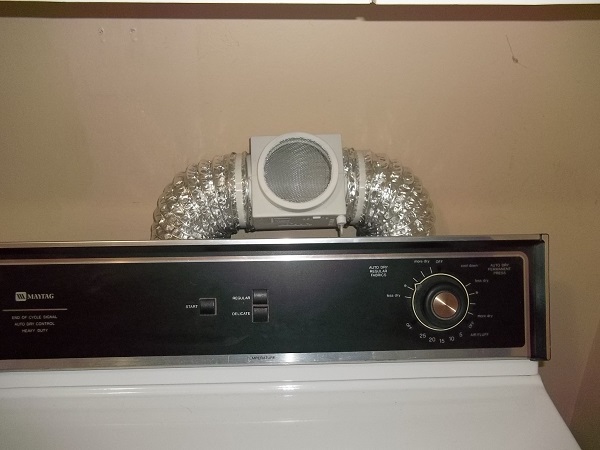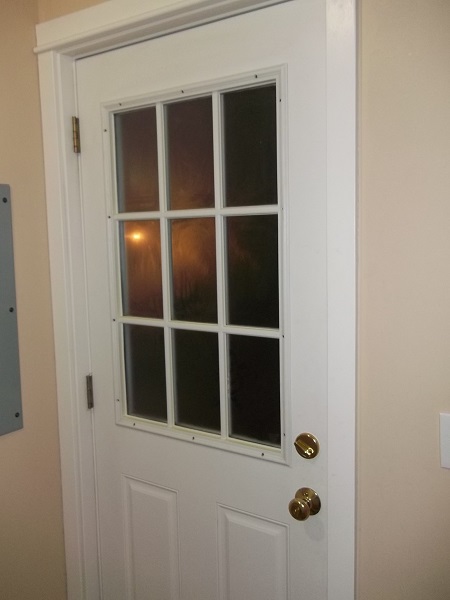EDIT: People keep telling me I may wind up with some significant mold issues in the near future doing this, so, I’ll warn you that “your mileage may vary” and I’ll have to keep tweaking when I flip the vent open (probably need to wait much longer than 10 minutes for sure) so that I minimize moisture output as I have had times where it was ridiculous. Also, I’ve seen some mention that this could cause a fire hazard, though, I don’t see how it’s any worse than any other dryer duct so long as you keep the lint down. Last, one commenter said NEVER to do this on a gas dryer as this could be dangerous due to CO2 fumes. I don’t have a gas dryer and have never owned one so I am ignorant of the subject. PLEASE do your research before attempting this install on your dryer!
A week or so ago I posted a video titled Save Money On Your Heating Bill for Less Than $15! which featured a simple device that you can install in the vent duct between your clothes dryer and the outside vent.
I was so excited about saving money on my heating bill that I jumped at the chance and impulse-bought this Dundas Heat Keeper Kit. It happened to show up the next day and I was about to install it when I immediately realized it wasn’t going to work THAT easily because I needed to purchase two dryer vent ducts. All these vent ducts do is connect your dryer to the duct that goes outside the house.
Anyway, I went with two five foot long ducts so that I could extend from the bottom of the dryer (where the duct outlet is) up to above the dryer where I connect it to the Dundas Heat Keeper Kit and then back down to the floor again where it connects to the outside duct. If you’ve ever messed with dryer ducts you’ll understand. I needed two because my dryer happened to connect directly to the outside duct, you, however, may be able to get away with only one additional dryer vent duct depending on what you have in your home already… pull the dryer out and look.
The setup is really simple: connect a vent duct from the dryer to the heat keeper and then connect the other end of the heat keeper using the second vent duct to the outside vent. They provided two “clamps” that were nothing more than large zip ties for connecting the dryer ducts to the heat keeper which worked well enough but I wouldn’t have called them clamps. I also had to purchase two additional 4″ metal duct clamps as well but you may not need to. Here’s what it looks like when completed:
 I briefly thought about velcroing it to the cabinet above but I figured it rested well enough atop the dryer and “the boss” didn’t complain other than to say after the first time I used it “It’s not very warm!” But, in my defense, I just started using it. Later on it warmed up. Speaking of which, I also immediately turned the laundry room into a sauna as evidenced by this picture of the now fogged-up exterior door:
I briefly thought about velcroing it to the cabinet above but I figured it rested well enough atop the dryer and “the boss” didn’t complain other than to say after the first time I used it “It’s not very warm!” But, in my defense, I just started using it. Later on it warmed up. Speaking of which, I also immediately turned the laundry room into a sauna as evidenced by this picture of the now fogged-up exterior door:
 It just so happens I fogged-up the bathroom mirror something awful too as the master bath is adjacent to the laundry room. Anyway, the important question is: how well did it heat the house?
It just so happens I fogged-up the bathroom mirror something awful too as the master bath is adjacent to the laundry room. Anyway, the important question is: how well did it heat the house?
Well, the first test is how much warmer the house feels. I can attest that the laundry room is a virtual sauna. 😉 After a few more run-throughs I determined that I needed to let the dryer vent on “summer” mode for more than just a few minutes like the first time. Honestly, 15 minutes is probably best for me but I seem to let it go about 10 minutes otherwise I forget to switch the Heat Keeper to “winter” mode in order to send the dryer heat back into the house. The kitchen and bathroom (which are both adjacent to the laundry room) feel a slight bit warmer for sure. The rest of the house? Not so much.
The second–and likely more important test–is how much warmer the house thermostat registered. Sadly, I have yet to register more than a degree or two higher than the typical setting of about 64 degrees. You might think that’s not important but I suspect–only through my own subjective feelings, mind you–that this makes more of a difference than you might think.
Aside from some serious testing I couldn’t say for sure how much this Heat Keeper may be saving on our heating bill, but I figured I was literally venting this otherwise “lost” heat to the world and I was better off investing a bit of money to conserve heat that I was paying for anyway.
I have considered purchasing yet another duct vent, perhaps even one twenty feet in length, so that I could then direct the dryer heat into the major part of the house, specifically the kitchen but have yet to do so. Of course, my wife didn’t sound too happy about that plan so I doubt it will come to fruition. Ultimately, I’d say a $30 investment at most won’t break the bank and may be more useful than not.

Leave a Reply